Cover Page
Title Page
Copyright Page
Dedication
Contents
Preface
Guided Tour
About the Authors
PART ONE: MODELING, COMPUTERS, AND ERROR ANALYSIS
PT1.1 Motivation
PT1.2 Mathematical Background
PT1.3 Orientation
CHAPTER 1: Mathematical Modeling and Engineering Problem Solving
1.1 A Simple Mathematical Model
1.2 Conservation Laws and Engineering
Problems
CHAPTER 2: Programming and Software
2.1 Packages and Programming
2.2 Structured Programming
2.3 Modular Programming
2.4 Excel
2.5 MATLAB
2.6 Mathcad
2.7 Other Languages and Libraries
Problems
CHAPTER 3: Approximations and Round-Off Errors
3.1 Significant Figures
3.2 Accuracy and Precision
3.3 Error Definitions
3.4 Round-Off Errors
Problems
CHAPTER 4: Truncation Errors and the Taylor Series
4.1 The Taylor Series
4.2 Error Propagation
4.3 Total Numerical Error
4.4 Blunders, Formulation Errors, and Data Uncertainty
Problems
EPILOGUE: PART ONE
PT1.4 Trade-Offs
PT1.5 Important Relationships and Formulas
PT1.6 Advanced Methods and Additional References
PART TWO: ROOTS OF EQUATIONS
PT2.1 Motivation
PT2.2 Mathematical Background
PT2.3 Orientation
CHAPTER 5: Bracketing Methods
5.1 Graphical Methods
5.2 The Bisection Method
5.3 The False-Position Method
5.4 Incremental Searches and Determining Initial Guesses
Problems
CHAPTER 6: Open Methods
6.1 Simple Fixed-Point Iteration
6.2 The Newton-Raphson Method
6.3 The Secant Method
6.4 Brent’s Method
6.5 Multiple Roots
6.6 Systems of Nonlinear Equations
Problems
CHAPTER 7: Roots of Polynomials
7.1 Polynomials in Engineering and Science
7.2 Computing with Polynomials
7.3 Conventional Methods
7.4 Müller’s Method
7.5 Bairstow’s Method
7.6 Other Methods
7.7 Root Location with Software Packages
Problems
CHAPTER 8: Case Studies: Roots of Equations
8.1 Ideal and Nonideal Gas Laws (Chemical/Bio Engineering)
8.2 Greenhouse Gases and Rainwater (Civil/Environmental Engineering)
8.3 Design of an Electric Circuit (Electrical Engineering)
8.4 Pipe Friction (Mechanical/Aerospace Engineering)
Problems
EPILOGUE: PART TWO
PT2.4 Trade-Offs
PT2.5 Important Relationships and Formulas
PT2.6 Advanced Methods and Additional References
PART THREE: LINEAR ALGEBRAIC EQUATIONS
PT3.1 Motivation
PT3.2 Mathematical Background
PT3.3 Orientation
CHAPTER 9: Gauss Elimination
9.1 Solving Small Numbers of Equations
9.2 Naive Gauss Elimination
9.3 Pitfalls of Elimination Methods
9.4 Techniques for Improving Solutions
9.5 Complex Systems
9.6 Nonlinear Systems of Equations
9.7 Gauss-Jordan
9.8 Summary
Problems
CHAPTER 10: LU Decomposition and Matrix Inversion
10.1 LU Decomposition
10.2 The Matrix Inverse
10.3 Error Analysis and System Condition
Problems
CHAPTER 11: Special Matrices and Gauss-Seidel
11.1 Special Matrices
11.2 Gauss-Seidel
11.3 Linear Algebraic Equations with Software Packages
Problems
CHAPTER 12: Case Studies: Linear Algebraic Equations
12.1 Steady-State Analysis of a System of Reactors (Chemical/Bio Engineering)
12.2 Analysis of a Statically Determinate Truss (Civil/Environmental Engineering)
12.3 Currents and Voltages in Resistor Circuits (Electrical Engineering)
12.4 Spring-Mass Systems (Mechanical/Aerospace Engineering)
Problems
EPILOGUE: PART THREE
PT3.4 Trade-Offs
PT3.5 Important Relationships and Formulas
PT3.6 Advanced Methods and Additional References
PART FOUR: OPTIMIZATION
PT4.1 Motivation
PT4.2 Mathematical Background
PT4.3 Orientation
CHAPTER 13: One-Dimensional Unconstrained Optimization
13.1 Golden-Section Search
13.2 Parabolic Interpolation
13.3 Newton’s Method
13.4 Brent’s Method
Problems
CHAPTER 14: Multidimensional Unconstrained Optimization
14.1 Direct Methods
14.2 Gradient Methods
Problems
CHAPTER 15: Constrained Optimization
15.1 Linear Programming
15.2 Nonlinear Constrained Optimization
15.3 Optimization with Software Packages
Problems
CHAPTER 16: Case Studies: Optimization
16.1 Least-Cost Design of a Tank (Chemical/Bio Engineering)
16.2 Least-Cost Treatment of Wastewater (Civil/Environmental Engineering)
16.3 Maximum Power Transfer for a Circuit (Electrical Engineering)
16.4 Equilibrium and Minimum Potential Energy (Mechanical/Aerospace Engineering)
Problems
EPILOGUE: PART FOUR
PT4.4 Trade-Offs
PT4.5 Additional References
PART FIVE: CURVE FITTING
PT5.1 Motivation
PT5.2 Mathematical Background
PT5.3 Orientation
CHAPTER 17: Least-Squares Regression
17.1 Linear Regression
17.2 Polynomial Regression
17.3 Multiple Linear Regression
17.4 General Linear Least Squares
17.5 Nonlinear Regression
Problems
CHAPTER 18: Interpolation
18.1 Newton’s Divided-Difference Interpolating Polynomials
18.2 Lagrange Interpolating Polynomials
18.3 Coefficients of an Interpolating Polynomial
18.4 Inverse Interpolation
18.5 Additional Comments
18.6 Spline Interpolation
18.7 Multidimensional Interpolation
Problems
CHAPTER 19: Fourier Approximation
19.1 Curve Fitting with Sinusoidal Functions
19.2 Continuous Fourier Series
19.3 Frequency and Time Domains
19.4 Fourier Integral and Transform
19.5 Discrete Fourier Transform (DFT)
19.6 Fast Fourier Transform (FFT)
19.7 The Power Spectrum
19.8 Curve Fitting with Software Packages
Problems
CHAPTER 20: Case Studies: Curve Fitting
20.1 Linear Regression and Population Models (Chemical/Bio Engineering)
20.2 Use of Splines to Estimate Heat Transfer (Civil/Environmental Engineering)
20.3 Fourier Analysis (Electrical Engineering)
20.4 Analysis of Experimental Data (Mechanical/Aerospace Engineering)
Problems
EPILOGUE: PART FIVE
PT5.4 Trade-Offs
PT5.5 Important Relationships and Formulas
PT5.6 Advanced Methods and Additional References
PART SIX: NUMERICAL DIFFERENTIATION AND INTEGRATION
PT6.1 Motivation
PT6.2 Mathematical Background
PT6.3 Orientation
CHAPTER 21: Newton-Cotes Integration Formulas
21.1 The Trapezoidal Rule
21.2 Simpson’s Rules
21.3 Integration with Unequal Segments
21.4 Open Integration Formulas
21.5 Multiple Integrals
Problems
CHAPTER 22: Integration of Equations
22.1 Newton-Cotes Algorithms for Equations
22.2 Romberg Integration
22.3 Adaptive Quadrature
22.4 Gauss Quadrature
22.5 Improper Integrals
Problems
CHAPTER 23: Numerical Differentiation
23.1 High-Accuracy Differentiation Formulas
23.2 Richardson Extrapolation
23.3 Derivatives of Unequally Spaced Data
23.4 Derivatives and Integrals for Data with Errors
23.5 Partial Derivatives
23.6 Numerical Integration/Differentiation with Software Packages
Problems
CHAPTER 24: Case Studies: Numerical Integration and Differentiation
24.1 Integration to Determine the Total Quantity of Heat (Chemical/Bio Engineering)
24.2 Effective Force on the Mast of a Racing Sailboat (Civil/Environmental Engineering)
24.3 Root-Mean-Square Current by Numerical Integration (Electrical Engineering)
24.4 Numerical Integration to Compute Work (Mechanical/Aerospace Engineering)
Problems
EPILOGUE: PART SIX
PT6.4 Trade-Offs
PT6.5 Important Relationships and Formulas
PT6.6 Advanced Methods and Additional References
PART SEVEN: ORDINARY DIFFERENTIAL EQUATIONS
PT7.1 Motivation
PT7.2 Mathematical Background
PT7.3 Orientation
CHAPTER 25: Runge-Kutta Methods
25.1 Euler’s Method
25.2 Improvements of Euler’s Method
25.3 Runge-Kutta Methods
25.4 Systems of Equations
25.5 Adaptive Runge-Kutta Methods
Problems
CHAPTER 26: Stiffness and Multistep Methods
26.1 Stiffness
26.2 Multistep Methods
Problems
CHAPTER 27: Boundary-Value and Eigenvalue Problems
27.1 General Methods for Boundary-Value Problems
27.2 Eigenvalue Problems
27.3 Odes and Eigenvalues with Software Packages
Problems
CHAPTER 28: Case Studies: Ordinary Differential Equations
28.1 Using ODEs to Analyze the Transient Response of a Reactor (Chemical/Bio Engineering)
28.2 Predator-Prey Models and Chaos (Civil/Environmental Engineering)
28.3 Simulating Transient Current for an Electric Circuit (Electrical Engineering)
28.4 The Swinging Pendulum (Mechanical/Aerospace Engineering)
Problems
EPILOGUE: PART SEVEN
PT7.4 Trade-Offs
PT7.5 Important Relationships and Formulas
PT7.6 Advanced Methods and Additional References
PART EIGHT: PARTIAL DIFFERENTIAL EQUATIONS
PT8.1 Motivation
PT8.2 Orientation
CHAPTER 29: Finite Difference: Elliptic Equations
29.1 The Laplace Equation
29.2 Solution Technique
29.3 Boundary Conditions
29.4 The Control-Volume Approach
29.5 Software to Solve Elliptic Equations
Problems
CHAPTER 30: Finite Difference: Parabolic Equations
30.1 The Heat-Conduction Equation
30.2 Explicit Methods
30.3 A Simple Implicit Method
30.4 The Crank-Nicolson Method
30.5 Parabolic Equations in Two Spatial Dimensions
Problems
CHAPTER 31: Finite-Element Method
31.1 The General Approach
31.2 Finite-Element Application in One Dimension
31.3 Two-Dimensional Problems
31.4 Solving PDEs with Software Packages
Problems
CHAPTER 32: Case Studies: Partial Differential Equations
32.1 One-Dimensional Mass Balance of a Reactor (Chemical/Bio Engineering)
32.2 Deflections of a Plate (Civil/Environmental Engineering)
32.3 Two-Dimensional Electrostatic Field Problems (Electrical Engineering)
32.4 Finite-Element Solution of a Series of Springs (Mechanical/Aerospace Engineering)
Problems
EPILOGUE: PART EIGHT
PT8.3 Trade-Offs
PT8.4 Important Relationships and Formulas
PT8.5 Advanced Methods and Additional References
APPENDIX A: THE FOURIER SERIES
APPENDIX B: GETTING STARTED WITH MATLAB
APPENDIX C: GETTING STARTED WITH MATHCAD
BIBLIOGRAPHY
INDEX
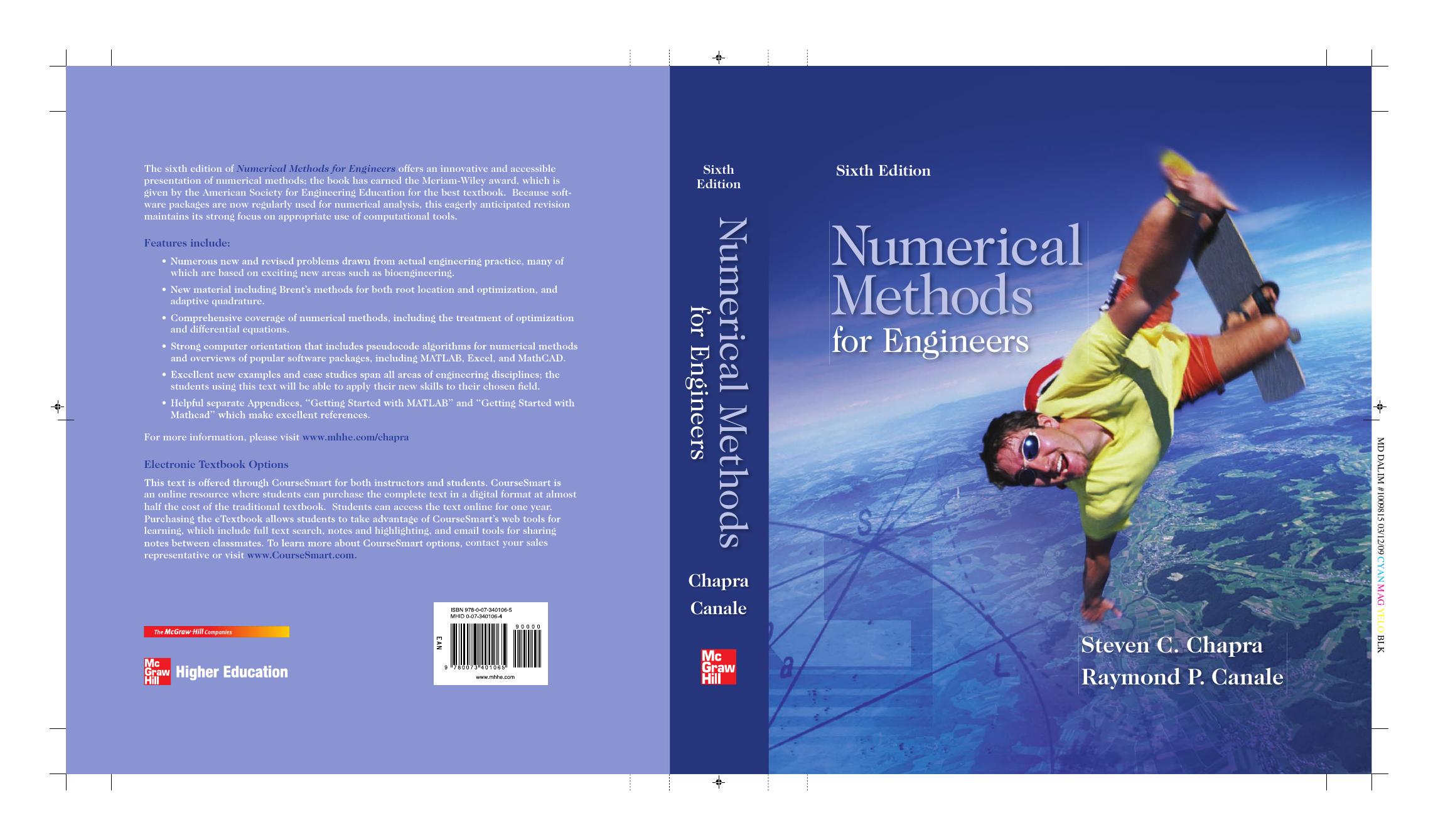
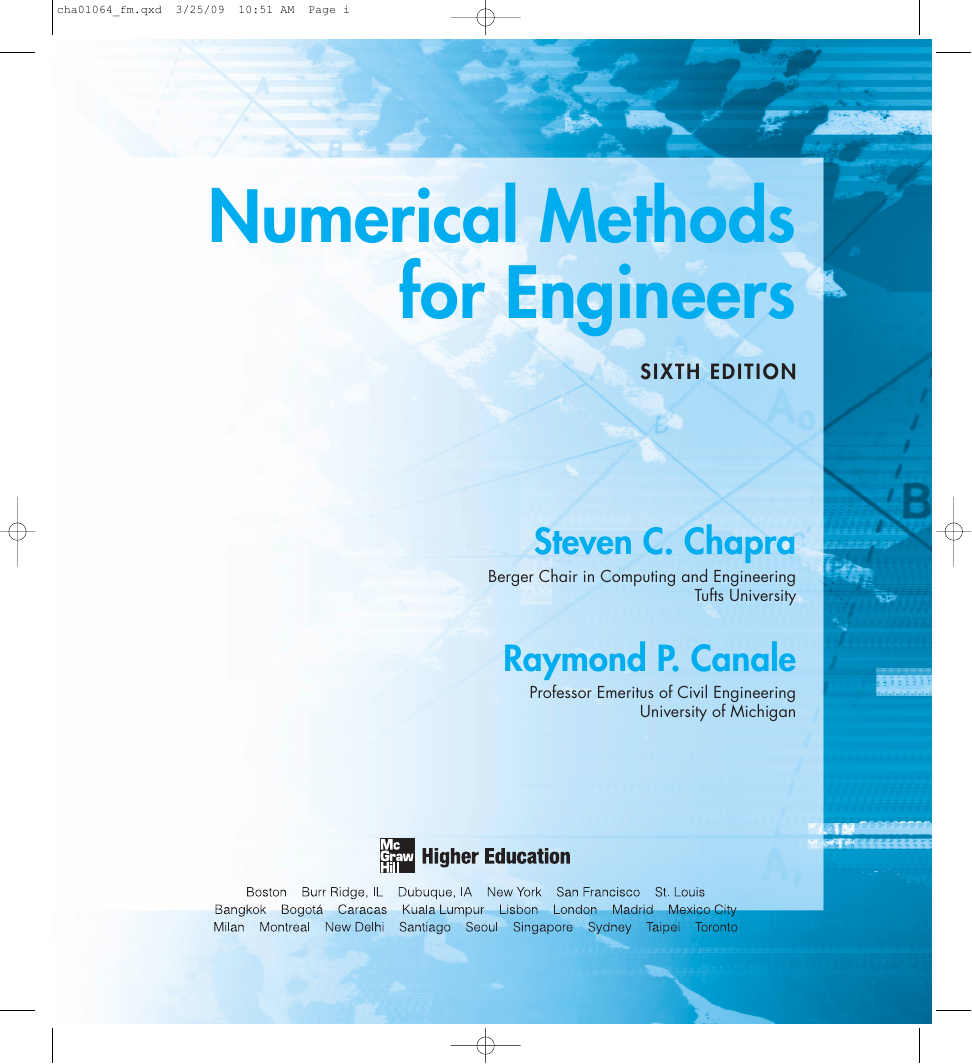
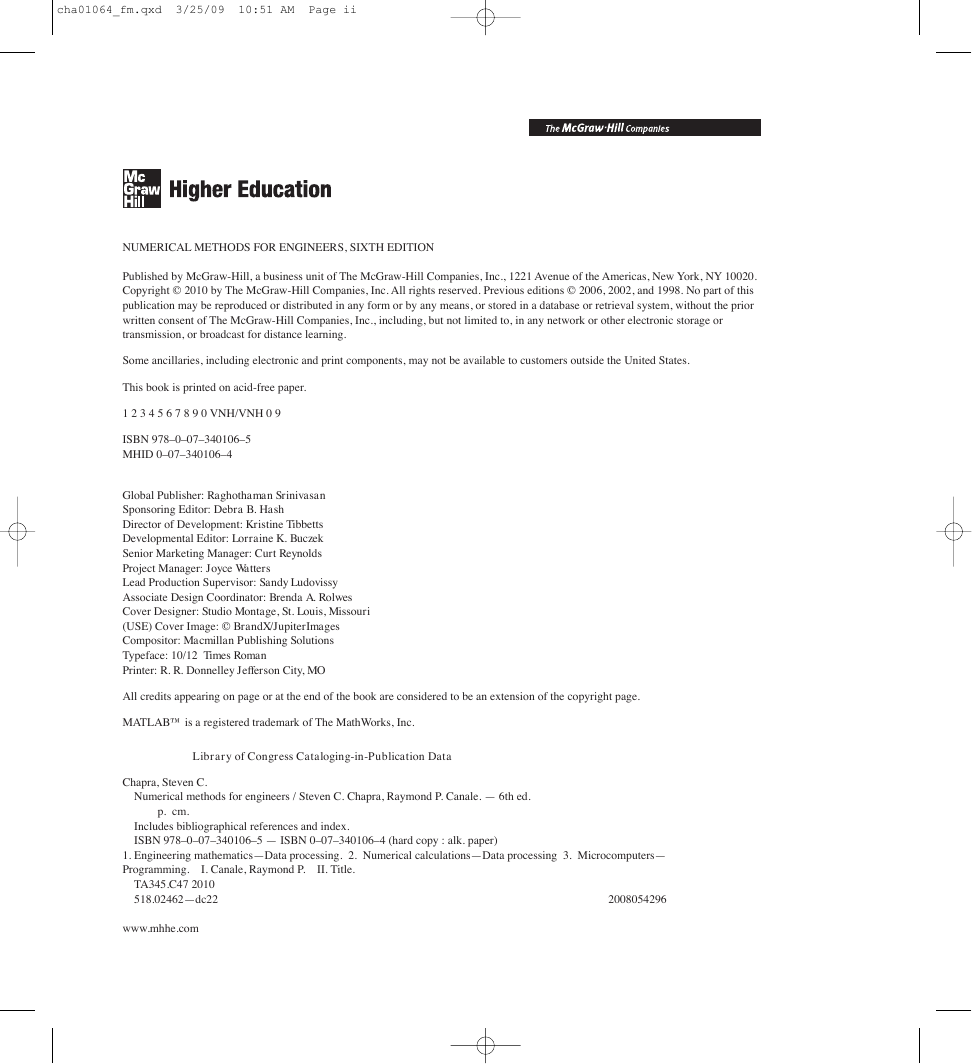

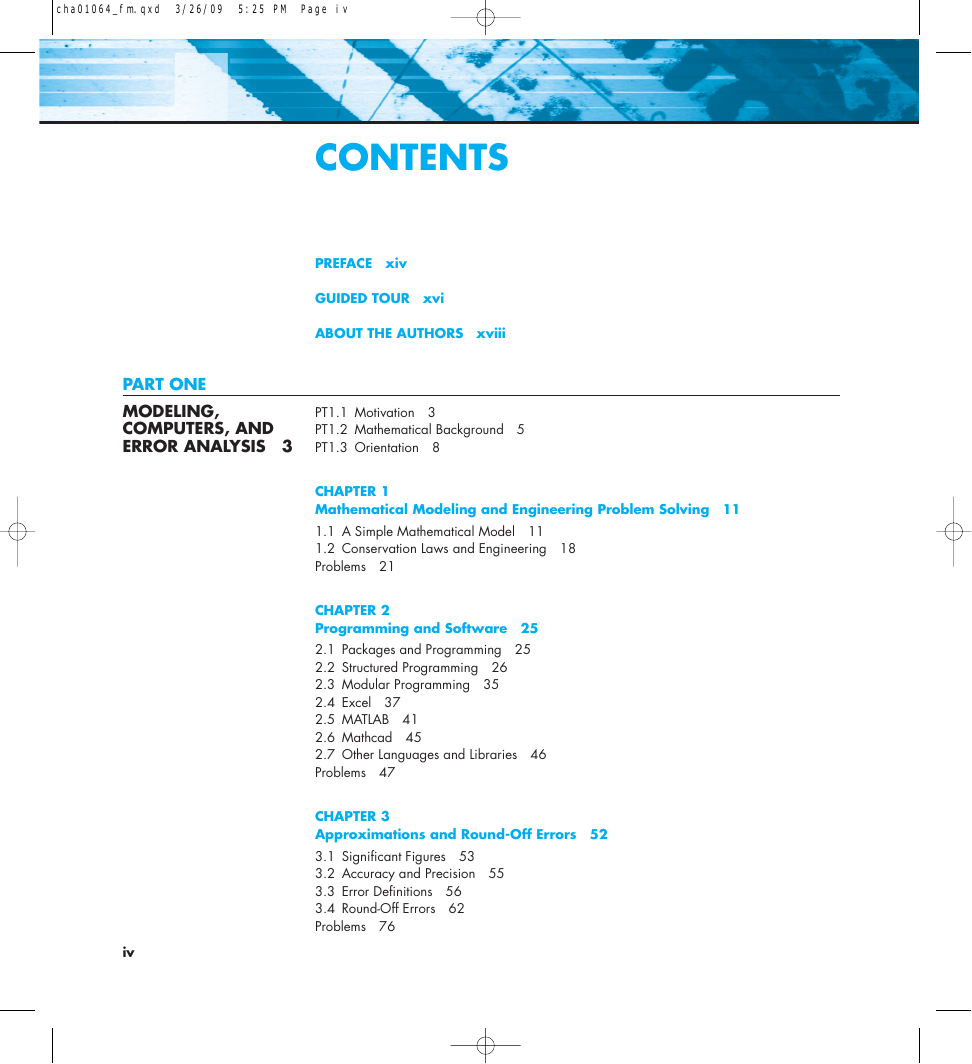
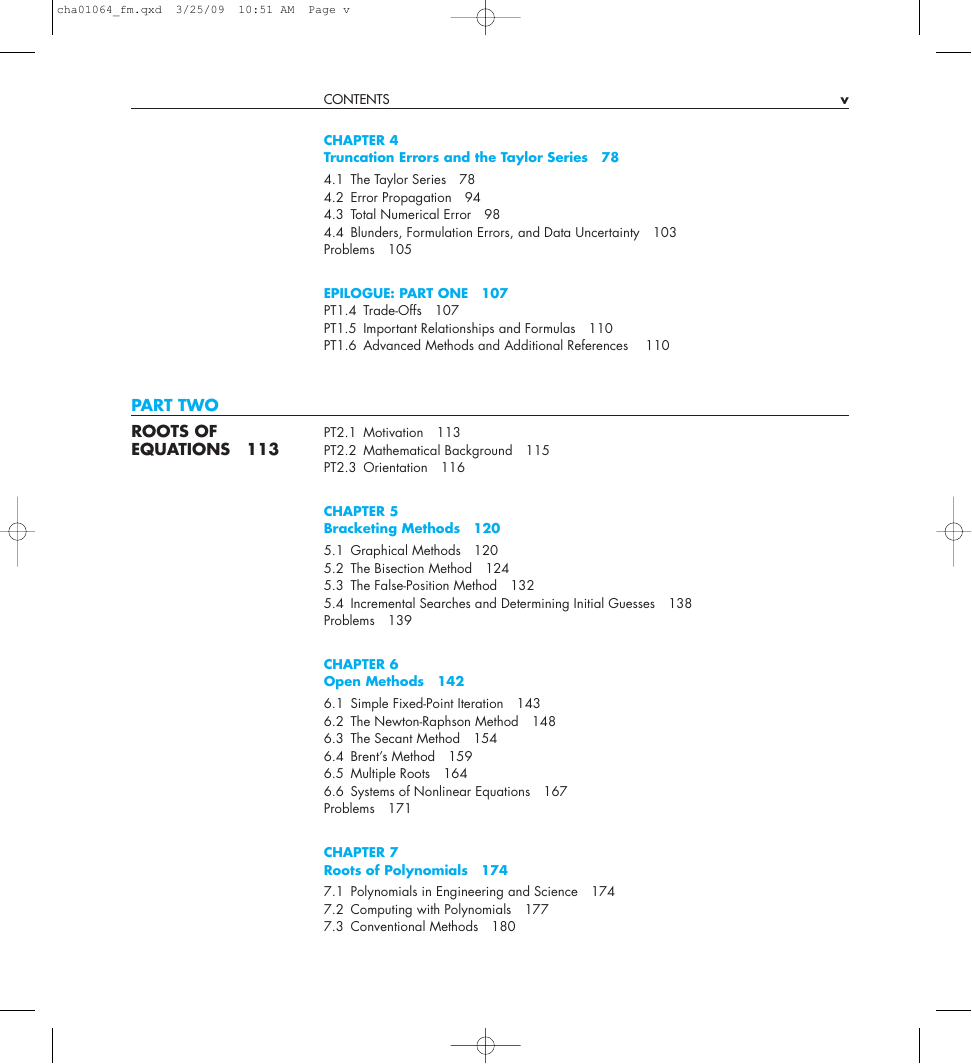

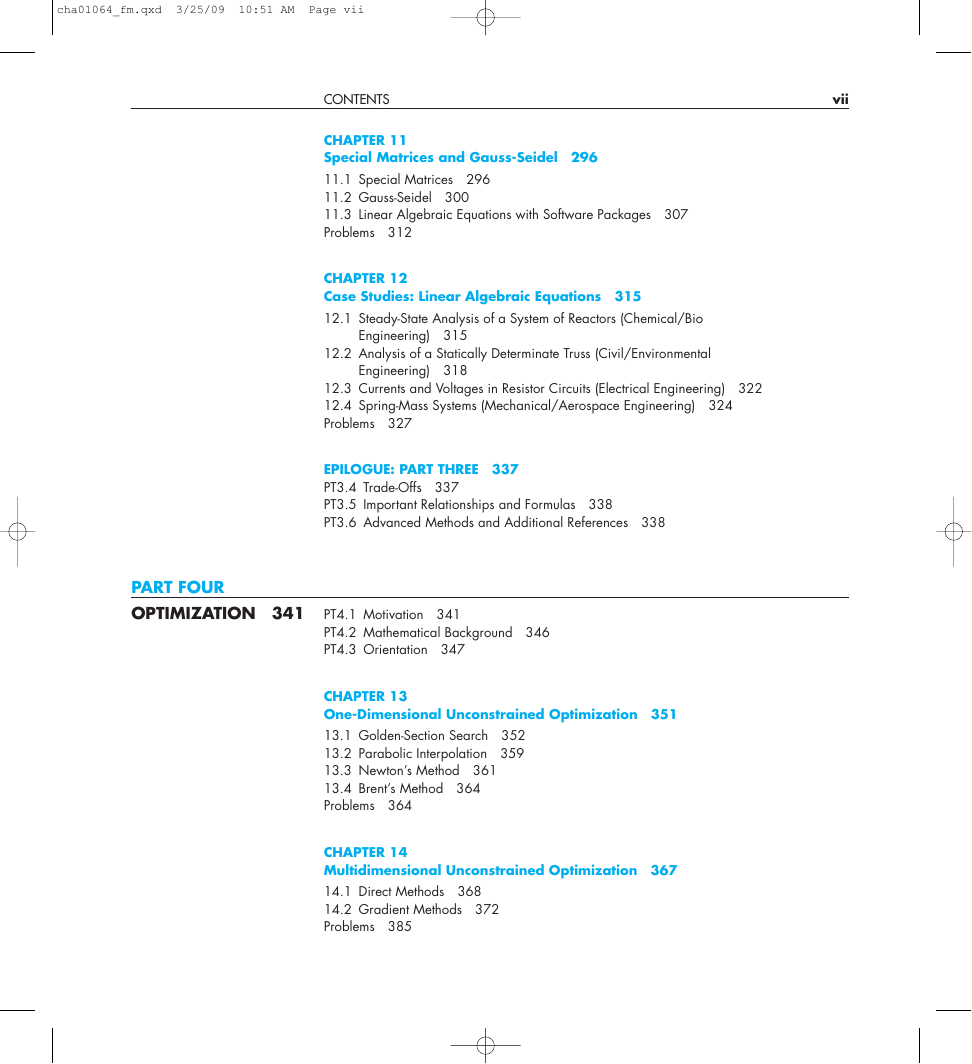








 2023年江西萍乡中考道德与法治真题及答案.doc
2023年江西萍乡中考道德与法治真题及答案.doc 2012年重庆南川中考生物真题及答案.doc
2012年重庆南川中考生物真题及答案.doc 2013年江西师范大学地理学综合及文艺理论基础考研真题.doc
2013年江西师范大学地理学综合及文艺理论基础考研真题.doc 2020年四川甘孜小升初语文真题及答案I卷.doc
2020年四川甘孜小升初语文真题及答案I卷.doc 2020年注册岩土工程师专业基础考试真题及答案.doc
2020年注册岩土工程师专业基础考试真题及答案.doc 2023-2024学年福建省厦门市九年级上学期数学月考试题及答案.doc
2023-2024学年福建省厦门市九年级上学期数学月考试题及答案.doc 2021-2022学年辽宁省沈阳市大东区九年级上学期语文期末试题及答案.doc
2021-2022学年辽宁省沈阳市大东区九年级上学期语文期末试题及答案.doc 2022-2023学年北京东城区初三第一学期物理期末试卷及答案.doc
2022-2023学年北京东城区初三第一学期物理期末试卷及答案.doc 2018上半年江西教师资格初中地理学科知识与教学能力真题及答案.doc
2018上半年江西教师资格初中地理学科知识与教学能力真题及答案.doc 2012年河北国家公务员申论考试真题及答案-省级.doc
2012年河北国家公务员申论考试真题及答案-省级.doc 2020-2021学年江苏省扬州市江都区邵樊片九年级上学期数学第一次质量检测试题及答案.doc
2020-2021学年江苏省扬州市江都区邵樊片九年级上学期数学第一次质量检测试题及答案.doc 2022下半年黑龙江教师资格证中学综合素质真题及答案.doc
2022下半年黑龙江教师资格证中学综合素质真题及答案.doc